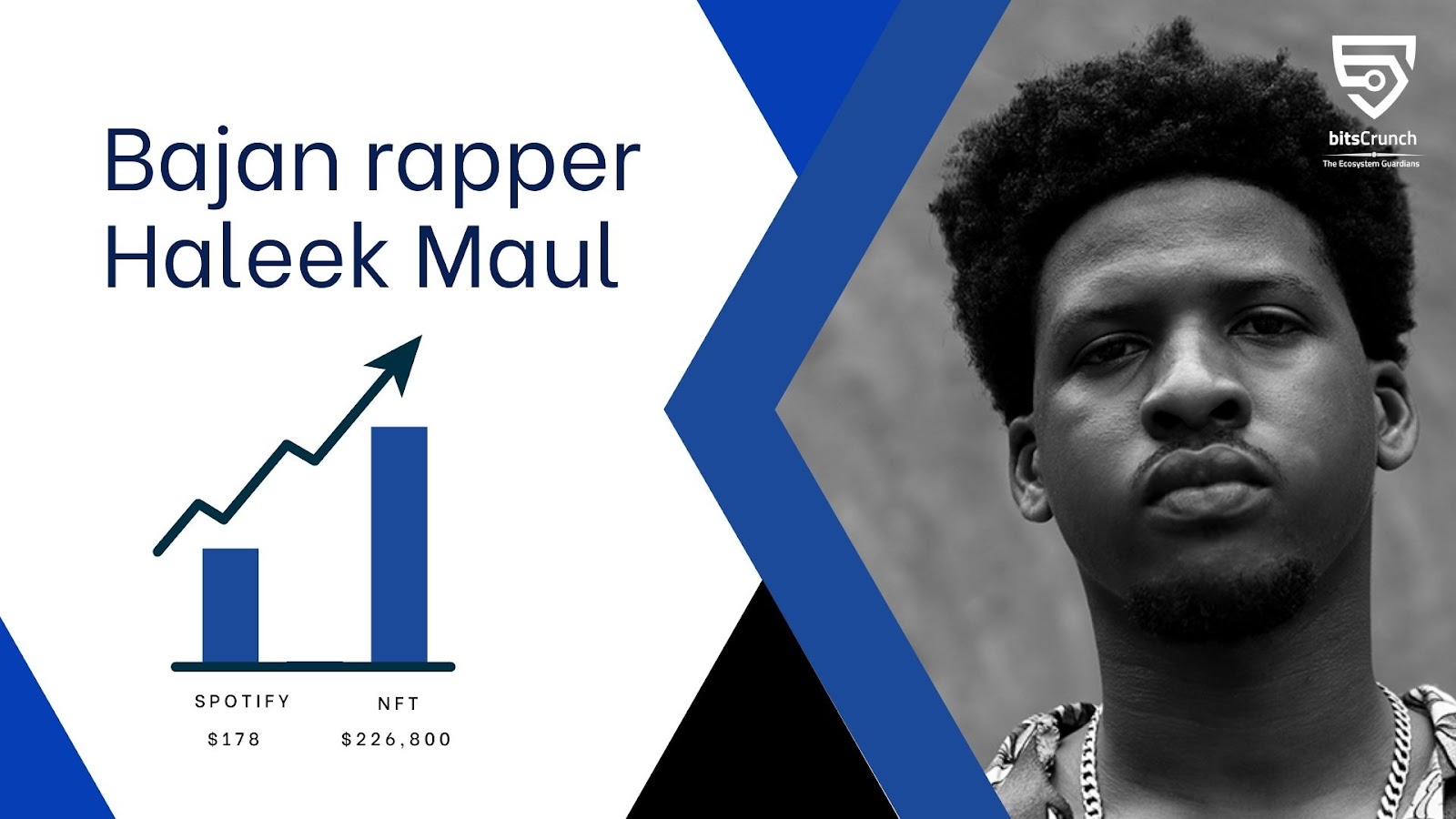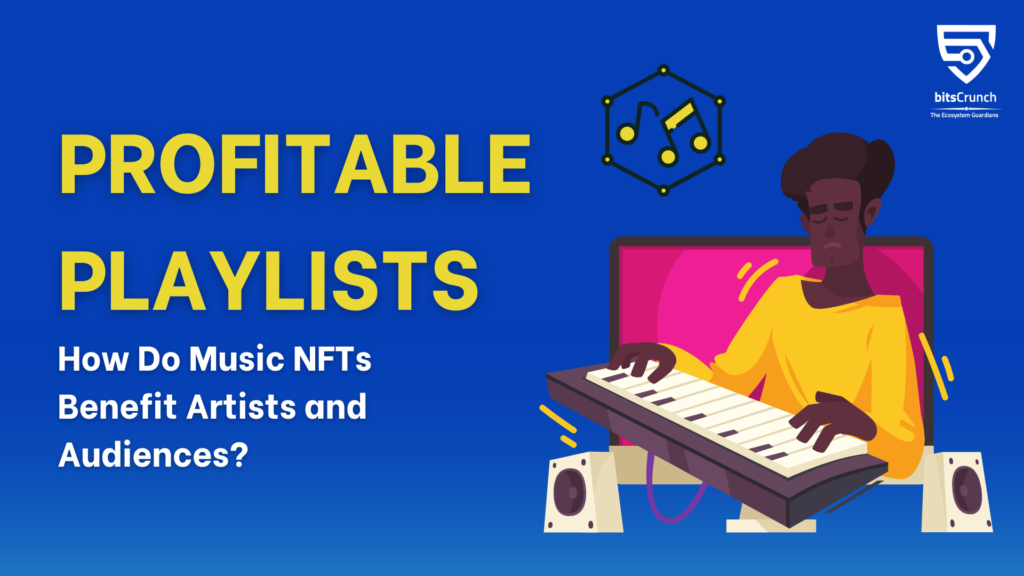Music Like Never Before!
With the meteoric rise in popularity that NFTs have garnered in the past two years, it is natural for people to expand on their use cases. One particular extension of their utility that is not only interesting but also rewarding is their presence in the entertainment sector.
While most laymen would associate NFTs with JPEG files or images, there is a growing appreciation for their utility in the world of arts. With regard to music, NFTs have been hitting all the right notes for artists and fans alike! Interesting? Well, play on the music then!
The Need for a New Tune:
Music NFTs, as they are popularly called, are a much-needed introduction to an industry that faces a slew of issues currently.
The first and perhaps most significant of these issues is that of ownership. This question of ownership spills onto other areas of the overall lifespan of a track or album. It affects not only the artist but audiences as well.
Currently, an artist must work with a production company to record their tracks. They then release these tracks (or albums) under the production label, sharing their earnings with them. They must also pay for a presence on popular streaming platforms such as iTunes or Spotify. The Spotify Royalty Calculator, for instance, projects an average earning of $400 for every 100,000 streams which is well below the amount of marketing expenditure necessary to get there. For instance, the case of rapper Haleek Maul is a great showcase of how music NFTs can help artists monetize their work.

The price of maintaining a presence on these platforms can be very high in many instances. This makes it hard for artists to make an honest living from their work unless they enjoy an immense fan following. For Maul, it is clear that minting a music NFT was more lucrative than his presence on Spotify!
For audiences, purchasing a track through such platforms only buys the right to listen to that track, but ownership over it remains in the hands of the production label. This means that there are potentially millions of others around the world who also own that right concurrently, making it a redundant and dull experience for fans of an artist.
There is also the issue of reach and engagement for both artists and audiences. Stemming from the issue of platform subscriptions, the listening experience is marred by advertisements that serve as constant interruptions to audiences. Only by paying for a premium subscription can fans enjoy an uninterrupted experience.
Artists who are up and coming may also struggle with gaining any traction against more established names in the industry. They must then invest in marketing campaigns and efforts that once again prove expensive, serving up another portion of an already limited earning capacity.
Engagement also affects fans, with the current model relying heavily on an artist’s social media presence and other marketing channels. All of these issues have created the scope for the innovative use of NFTs in the music industry.
Innovations That Work:
Music NFTs are a great solution to the aforementioned problems, serving as a direct fix to the issues of ownership and engagement across the industry’s spectrum.
First of all, it is important to know how they work to properly understand their effectiveness.
The process begins, as with all entertainment products, with creation. An artist who has written and performed a new track mints an NFT for it on a platform geared towards music NFTs. Such an NFT would be a single edition, popularly called as a 1/1s. Artists could also mint NFTs for a whole album consisting of multiple tracks and associated artworks as a collection, which are known as 1/10s.
This NFT is now a unique, exclusive collectible that a fan could purchase through the associated platform once the artist releases it. One may wonder what the difference between buying a track on iTunes or an NFT platform is. The answer is that a streaming platform only provides a license to listen to that track or album. The NFT, however, gives the buyer exclusive ownership over that file and serves as a unique, distinct product associated with the artist.
Music NFTs Taking Center Stage:
The success and utility of music NFTs is evident from the number of marketplaces that are exclusively dedicated to them. For instance, a number of DAOs are focused on delivering useful, simple solutions for artists to maximize their earnings from NFTs.
An example of this would be MusicFund, which offers grants to upcoming artists. These grants are awarded from a pool of contributions from members of the platform, who then proceed to vote for the artists they like. The top three artists are awarded a portion of the total pool. This not only helps artists develop their work, but also allows them to engage with potential fans.
Some DAOs also focus on helping artists gain traction at major events. For example, Friends With Benefits was a major presence at the NFT.NYC event in 2021, featuring many up and coming artists such as Caroline Polachek, Chanel Tres and many others, who are making waves as DJs.
There are also platforms and marketplaces that are geared towards assisting artists with earning royalties on their work. Royal, for instance, offers NFTs as Limited Digital Assets, or LDAs, which allow artists to share earnings from streaming royalties with fans holding associated NFTs. This concept has proven popular after popular American DJ and producer 3Lau minted the LDA for his hit song “Worst Case”, which rewarded NFT holders with 50% of the royalty streaming earnings of the song!
There are also a number of marketplaces such as OpenSea and Catalog, that are dedicated to offering a platform for the exclusive growth of music NFTs. In addition, there are genre-specific marketplaces such as Groovetime for dance music, and Beat Foundry, that seek to further innovate music NFTs by encouraging generative music, a new genre featuring collaborations between artists and computers!
It is not just platforms that are encouraging a shift to music NFTs! Individual artists and bands are also advocating for this change. Popular rock band Kings of Leon has released their album While You See Yourself on the NFT platform Yellow Heart with a host of benefits such as a lifetime front row seat to their live performances. Other noteworthy names in music NFTs include Mike Shinoda from Linkin Park, DeadMau5, Shawn Mendes.
Such efforts and innovations have allowed music NFTs to gain a lot of traction in recent years. It is clear that artists are exercising their creativity to maximize the value that they derive from them and are also passing on those benefits to their audiences as well.
The Highs and Lows of Music NFTs:
Music NFTs are a great way for artists to profit from their work without paying a part of their earnings to a production label or a streaming platform. Once their music NFT is sold, they retain the money. They could also use the Smart Contracts feature to set up royalties every time the NFT is sold to another buyer!
Another important issue that is addressed by music NFTs is that of engagement. It is not only for music files but for tickets to live performances as well. They can also set up exclusive benefits for fans, making it a very engaging and enjoyable process. This allows them to garner more popularity and reach a wider audience through a simple process.
For fans, music NFTs give them ownership over the track in a way that production labels and streaming platforms cannot currently replicate. That may be set to change shortly, however, considering that Spotify plans to integrate NFTs and Web3 into its services.
However, the industry does seem initially resistant to the disruptive changes that NFTs are bringing to the table. Many artists continue to rely on tried and tested methods of connecting with audiences and profiting from their work. Minting NFTs can also prove expensive, depending on the platform that the artist is using.
Winds of Change:
It is evident that music NFTs are set to change the way we engage with our favorite artists and that further innovations can only strengthen their standing in the industry. It will be interesting to see how artists engage with the technology and profit from it.If learning about the latest development in the crypto and NFT space is music to your ears, bitsCrunch plays the right tunes with our collection of blogs! Visit our page to learn, and grow along with millions of enthusiasts around the world.
The post Profitable Playlists – How Do Music NFTs Benefit Artists and Audiences? appeared first on bitsCrunch.
